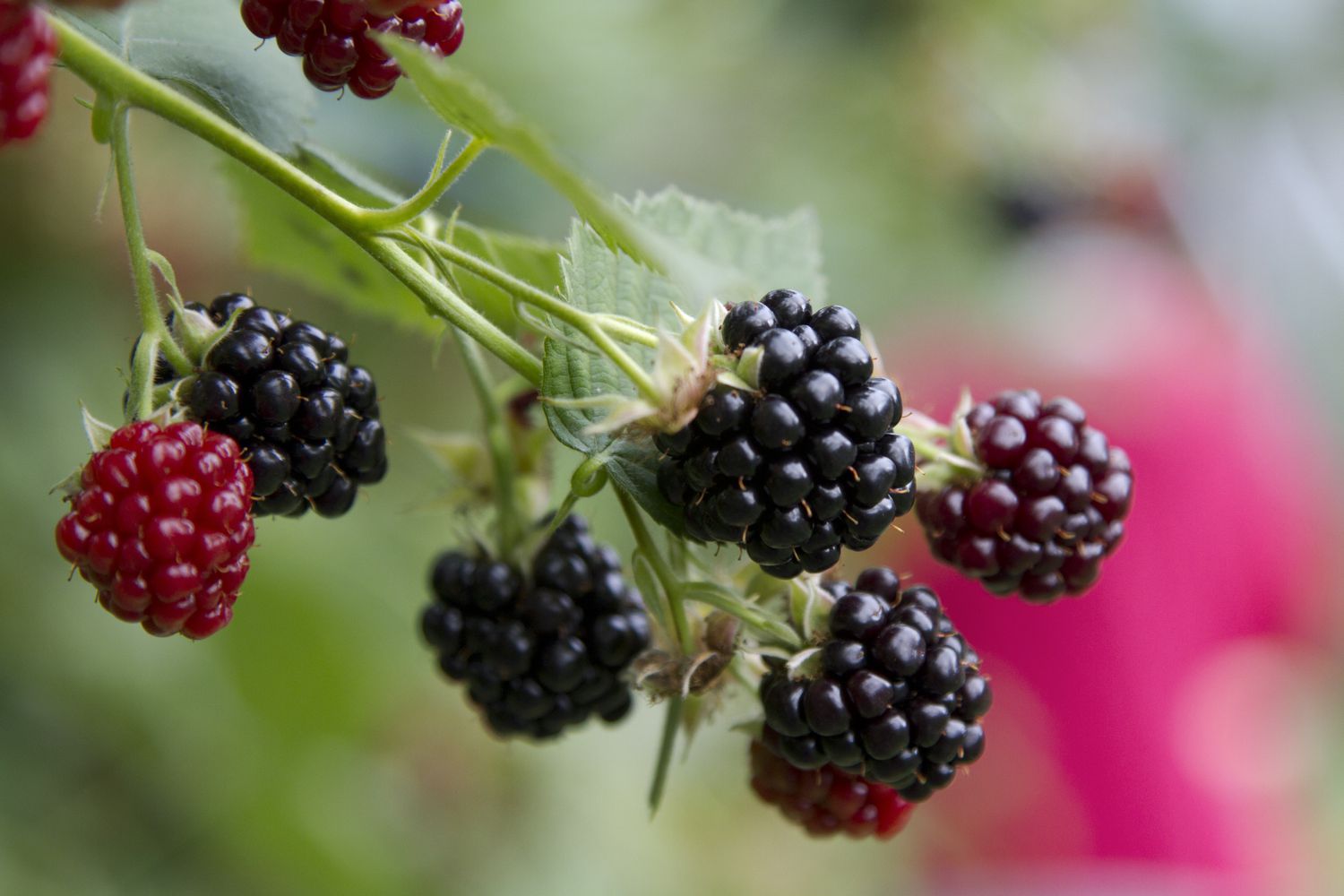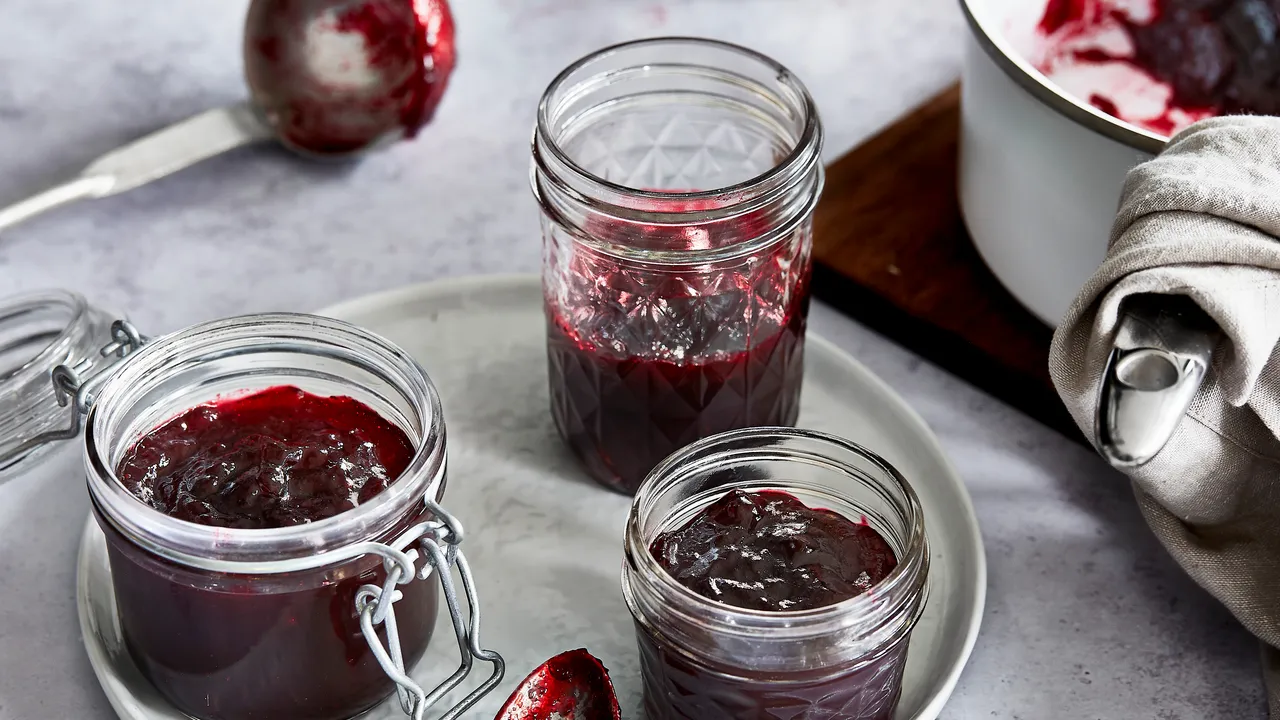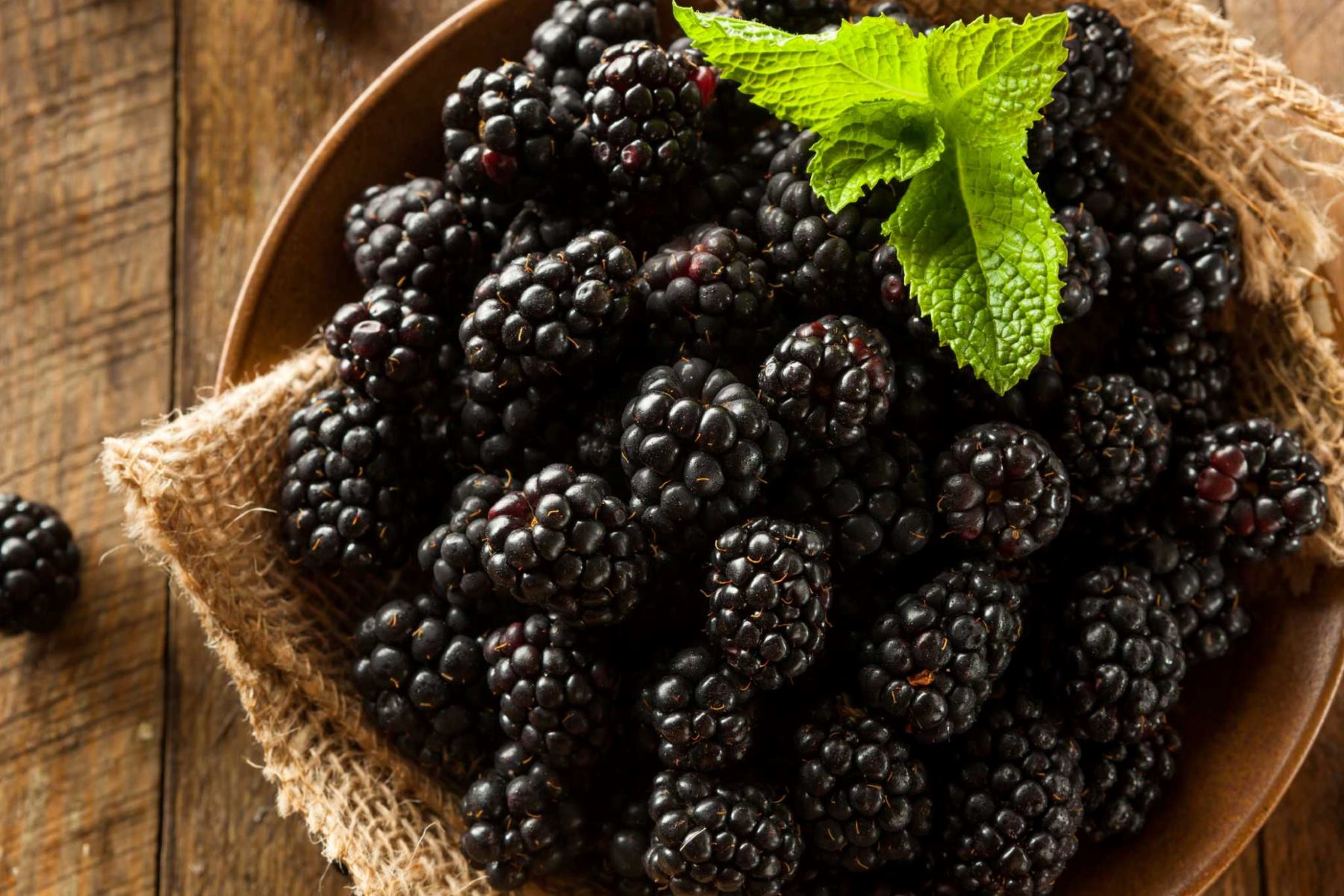Home>Garden Essentials>How To Grow Blackberries From Seeds


Garden Essentials
How To Grow Blackberries From Seeds
Modified: March 16, 2024
Learn how to grow blackberries from seeds in your garden. Follow these simple steps and start enjoying your own delicious homegrown berries!
(Many of the links in this article redirect to a specific reviewed product. Your purchase of these products through affiliate links helps to generate commission for Storables.com, at no extra cost. Learn more)
Introduction
Welcome to the world of growing blackberries from seeds. Blackberries are not only delicious and nutritious, but they can also be a rewarding addition to your garden. Whether you are a seasoned gardener or a beginner, growing blackberries from seeds is a fun and fulfilling experience.
In this article, we will guide you through the process of choosing the right blackberry seeds, preparing the seedbed, planting the seeds, providing the right growing conditions, caring for the seedlings, and, finally, harvesting and enjoying the fruits of your labor. So, let’s dive in and discover how to grow blackberries from seeds.
Key Takeaways:
- Growing blackberries from seeds is a fun and rewarding experience. Choose the right seeds, prepare the seedbed, and provide optimal growing conditions for a bountiful harvest.
- Enjoy the sweet taste of homegrown blackberries by harvesting at the right time, savoring the fruits, and exploring culinary delights. Save seeds for future plantings and create unique harvest experiences.
Read more: How To Grow Blackberries From Seed
Choosing the Right Blackberry Seeds
When it comes to growing blackberries from seeds, selecting the right seeds is crucial for success. There are several factors to consider when choosing blackberry seeds:
- Variety: Blackberries come in different varieties, each with its own unique characteristics. Do some research and choose a variety that suits your climate, soil type, and personal preferences. Some popular blackberry varieties include ‘Chester Thornless,’ ‘Marion,’ and ‘Triple Crown.’
- Freshness: Fresh seeds have a higher germination rate, so try to obtain seeds from reputable sources or harvest them from ripe blackberries. Look for plump, firm seeds and avoid any that are discolored or shriveled.
- Genetic Purity: Opt for seeds that are genetically pure and free from disease. This information is typically indicated on the seed packet or provided by the supplier.
- Availability: Blackberry seeds can be found at local nurseries, gardening centers, or online. Consider the availability and price of the seeds before making your purchase.
It’s important to note that growing blackberries from seeds may result in variations in taste, size, and overall characteristics compared to the parent plant. If you want to ensure consistent results, consider purchasing established blackberry plants instead of starting from seeds.
Preparing the Seedbed
Before planting your blackberry seeds, it’s essential to prepare a suitable seedbed. The seedbed preparation process will ensure the optimal conditions for germination and growth. Here are the steps to follow:
- Choose the Right Location: Select a sunny spot in your garden with well-draining soil for the best results. Blackberries thrive in full sun, so try to find an area that receives at least 6-8 hours of direct sunlight each day.
- Clear the Area: Remove any weeds, rocks, or debris from the designated area. This will help prevent competition for resources and ensure that the blackberry plants have enough space to grow.
- Soil Preparation: Blackberries prefer slightly acidic soil with a pH between 5.5 and 6.5. Test the soil pH and, if necessary, amend it to achieve the optimal range. Incorporate organic matter, such as compost or well-rotted manure, into the soil to improve its fertility and drainage.
- Loosen the Soil: Use a garden fork or tiller to loosen the soil to a depth of about 8-10 inches. This will provide a loose and aerated environment for the blackberry seeds to establish their roots.
- Remove Large Clumps and Stones: Break up any large clumps of soil and remove any stones or obstacles that may impede seed germination and seedling growth.
By following these steps, you’ll create an ideal seedbed that promotes healthy growth and development of your blackberry seeds.
Planting Blackberry Seeds
Now that you have prepared the seedbed, it’s time to plant your blackberry seeds. Here’s a step-by-step guide to help you with the process:
- Timing: Blackberry seeds are typically planted in the early spring, around the time of the last frost. The soil temperature should be around 60°F (15°C) for optimal germination. Check your local climate and follow the recommended planting time in your region.
- Seed Soaking: To enhance germination, consider soaking the blackberry seeds in water overnight before planting. This can help soften the seed coat and promote quicker sprouting.
- Sowing Depth: Plant the blackberry seeds about 1/4 inch deep in the prepared seedbed. Space the seeds approximately 2-3 inches apart to allow room for growth.
- Moisture: After planting, gently water the seedbed to provide adequate moisture. It’s important to keep the soil slightly moist throughout the germination process. Avoid overwatering, as excessive moisture can lead to rotting.
- Protection: Cover the seedbed with a layer of mulch to help conserve moisture and suppress weed growth. Mulch can also provide some insulation and protection to the emerging seedlings.
- Patience: Germination time can vary, but expect to see some seedlings emerge within 2-3 weeks. Be patient and continue to provide the proper care and attention to your blackberry seeds as they start to grow.
Keep in mind that not all blackberry seeds will germinate, and the germination rate may vary. It’s a good idea to sow extra seeds to account for any potential failures.
By following these steps, you’ll be on your way to growing blackberry plants from seeds. Next, let’s explore the essential growing conditions for your blackberry seedlings.
To grow blackberries from seeds, start by collecting ripe berries and removing the seeds. Then, plant the seeds in a well-draining soil mix and keep them moist. Place the container in a sunny spot and wait for the seeds to germinate.
Providing the Right Growing Conditions
Once your blackberry seeds have germinated and started to grow, it’s important to provide them with the right growing conditions to ensure healthy development. Here are some key factors to consider:
- Sunlight: Blackberries thrive in full sun, so make sure they receive at least 6-8 hours of direct sunlight each day. Insufficient sunlight can lead to weak growth and reduced fruit production.
- Watering: Blackberry plants require consistent and adequate moisture. Water the plants regularly, especially during dry spells. Aim to keep the soil consistently moist, but not waterlogged, as excessive moisture can cause root rot. Avoid overhead watering, as it can lead to disease and fungal issues.
- Soil Moisture and Drainage: While blackberries need consistent moisture, it’s essential to ensure proper drainage. Poorly drained soil can suffocate the roots and lead to root rot. If your soil doesn’t drain well, consider raised beds or adding organic matter like compost or peat moss to improve drainage.
- Soil Fertility: Blackberries grow best in well-draining, fertile soil. Incorporate organic matter, such as compost or aged manure, into the soil before planting to provide essential nutrients. Regularly feed the plants with a balanced fertilizer to maintain soil fertility throughout the growing season.
- Pruning: Proper pruning is vital for blackberry plants to maintain their vigor and productivity. Prune out any damaged or diseased canes, as well as any weak or crowded growth. Additionally, consider training your blackberry plants onto a trellis or support system to help with growth and fruit production.
- Weed Control: Keep the area around your blackberry plants free from weeds. Weeds compete for nutrients and moisture, which can negatively impact the growth of your blackberry plants. Mulching around the plants can help to suppress weed growth.
By providing the right growing conditions, you will ensure that your blackberry plants thrive and produce abundantly. Now, let’s explore the essential care practices for blackberry seedlings.
Read more: How To Remove Seeds From Blackberries
Caring for Blackberry Seedlings
Caring for blackberry seedlings is essential to promote healthy growth and maximize their fruit-bearing potential. Here are some important care practices to follow:
- Watering: Blackberry seedlings need consistent moisture, especially during the first year of growth. Keep the soil evenly moist but not waterlogged. Water deeply once a week, or more frequently in dry conditions.
- Mulching: Apply a layer of organic mulch around the base of the seedlings to help conserve moisture, suppress weeds, and moderate soil temperature. Use materials like straw, wood chips, or compost but avoid piling the mulch against the stems, as it can encourage rot.
- Fertilizing: Feed blackberry seedlings with a balanced fertilizer in early spring, following the manufacturer’s instructions. Apply the fertilizer around the base of the plants, taking care not to over-fertilize, as excessive nutrients can lead to weak growth.
- Support: As the seedlings grow, provide support by tying the canes to a trellis or support structure. This will help keep the plants upright and prevent them from sprawling on the ground, making it easier to care for and harvest the fruits.
- Weed Control: Regularly remove weeds from around the blackberry seedlings to reduce competition for nutrients. Hand-pull weeds or use shallow cultivation techniques to avoid damaging the shallow roots of the plants.
- Pest and Disease Management: Monitor your blackberry seedlings for any signs of pests or diseases, such as aphids, mites, or powdery mildew. If necessary, take appropriate measures to control pest infestations or treat diseases promptly. Consult with a local garden center or extension service for guidance on identifying and managing common blackberry pests and diseases in your area.
- Pruning: Pruning is essential for blackberry plants to maintain their shape, remove dead or damaged canes, and encourage new growth. Prune older canes after they have completed their fruiting cycle, typically in late winter or early spring. Consult pruning guides specific to the blackberry variety you are growing for proper pruning techniques.
By following these care practices, you will ensure the healthy development of your blackberry seedlings and set the stage for a bountiful harvest. Now, let’s move on to the exciting part – harvesting and enjoying your homegrown blackberries!
Harvesting and Enjoying Homegrown Blackberries
The time has come to reap the rewards of your hard work and enjoy the sweet taste of homegrown blackberries. Here’s how to harvest and savor the delicious fruits:
- Timing: Blackberries are ready to be harvested when they are fully ripe. Look for berries that are deep purple-black in color, plump, and easily detach from the plant when gently pulled. Ripe blackberries are also sweet-smelling and have a glossy appearance.
- Harvesting Technique: To harvest blackberries, gently grasp the berry between your thumb and forefinger and give it a slight twist. The berry should easily detach from the plant. Be careful not to squeeze or crush the berries, as they are delicate and can bruise easily.
- Harvesting Frequency: Blackberries ripen over a period of several weeks, so it’s a good idea to check your plants every few days for ripe berries. Harvest them as they become ripe to enjoy them at their peak flavor and freshness.
- Storage: Freshly harvested blackberries are best enjoyed immediately. If you have more berries than you can consume at once, store them in a single layer in a shallow container in the refrigerator. Consume them within a few days for the best taste and quality.
- Culinary Delights: Blackberries are incredibly versatile and can be enjoyed in a variety of ways. Add them to fruit salads, use them in smoothies, make jams or preserves, bake them into pies, or simply savor them fresh. Their sweet-tart flavor is a delightful addition to both sweet and savory dishes.
- Freezing: If you have an abundance of blackberries, consider freezing them for later use. Wash and dry the berries, then spread them in a single layer on a baking sheet and freeze until firm. Transfer the frozen berries to a freezer-safe bag or container for long-term storage. Frozen blackberries can be used in smoothies, desserts, or jams even after the harvest season is over.
Remember to save some seeds from your homegrown blackberries for future plantings. With each generation, you may notice slight variations in taste and characteristics, creating a unique experience with each harvest.
So, enjoy the fruits of your labor and savor the satisfaction of growing and relishing your very own homegrown blackberries. Happy harvesting!
Conclusion
Growing blackberries from seeds is a rewarding and enjoyable endeavor that allows you to experience the journey from seed to fruit. By choosing the right blackberry seeds, preparing the seedbed, planting with care, providing optimal growing conditions, and tending to the seedlings with proper care, you can successfully cultivate your own bountiful crop of delicious blackberries.
Remember to select blackberry varieties that are well-suited to your climate, ensure freshness and genetic purity when obtaining seeds, and be patient as you wait for germination and growth to occur. Preparing a suitable seedbed, with ample sunlight, well-draining soil, and optimal moisture levels, creates the ideal environment for blackberry seedlings to thrive.
Providing the right growing conditions, including adequate sunlight, consistent watering, balanced fertilizer, proper support, weed control, and disease management, is essential for robust growth and an abundant harvest. Caring for blackberry seedlings by following pruning practices, maintaining moisture levels, and addressing pest and disease issues will help ensure the health and productivity of your plants.
Finally, the joy of harvesting and enjoying homegrown blackberries is a delightful culmination of your efforts. By harvesting at the right time, savoring the sweetness, and exploring various culinary possibilities, you can truly appreciate the fruits of your labor. Whether fresh, frozen, or transformed into mouthwatering dishes, homegrown blackberries offer a burst of flavor and satisfaction.
So, roll up your sleeves, gather your blackberry seeds, and embark on a journey of growth, nurturing, and harvest. With the right knowledge and care, you can experience the joys of homegrown blackberries and create memories that will last a lifetime.
Frequently Asked Questions about How To Grow Blackberries From Seeds
Was this page helpful?
At Storables.com, we guarantee accurate and reliable information. Our content, validated by Expert Board Contributors, is crafted following stringent Editorial Policies. We're committed to providing you with well-researched, expert-backed insights for all your informational needs.















0 thoughts on “How To Grow Blackberries From Seeds”